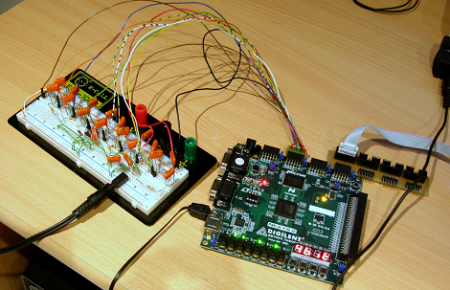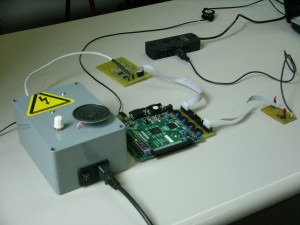
[Jochem] has always been fascinated by chaos in nature, whether it’s a swarm of ants or evolution in action in a petri dish. His insect orchestra takes the chaos in the natural world and changes it into something completely artificial. In this case, MIDI.
For the build, a light sensor was placed at the bottom of a test tube. A cricket (or grasshopper, or locust) is then put into the test tube. The test tube is then closed up with a cap that houses a LED. An Arduino reads the light sensors and then transmits the data over MIDI. The MIDI commands are picked up in Abelton Live which converts everything to audio.
[Jochem] rigged up Abelton to have the insects perform in four different modes – instrument, synthesis, samples, and drums. Definitely an improvement over the humble Mexican Jumping bean.
You can check out the insect orchestra in action after the break.
Continue reading “Insects Turned Into Orchestra; Not Harmed But Terribly Inconvenienced”
















